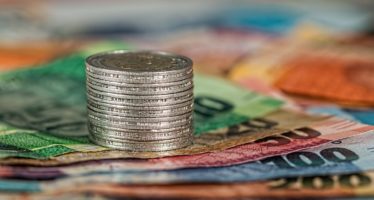Smuggling gold, Guyana’s highest Money Laundering Risk

Long considered a serious but largely ignored crime, gold smuggling has been ranked as one of the highest money laundering risks in Guyana.
According to the country’s recently released Second Money Laundering and Terrorist Financing National Risk Assessment (NRA) report, the estimated value of the proceeds generated from smuggling, including gold smuggling, is US$2.2 billion, compared to drug trafficking at a mere US$13.4 million and tax evasion at US$10.4 million.
The assessment was compiled by the Anti-Money Laundering and Countering the Financing of Terrorism National Coordination Committee. It noted that while Guyana has an overall money laundering risk of Medium High based on an assessment of 20 sectors, the Dealers in Precious Minerals or Licensed Traders’ sector was the only sector among the 20 assessed that had a high vulnerability rating.
The major contributing factors to the country’s Medium High money laundering vulnerability rating, according to the NRA, are directly related to its ability to combat money laundering. These factors include the poor quality of criminal investigations, prosecutions, adjudications and asset forfeiture frameworks, as well as the lack of an AML Policy and Strategy and inadequate cross-border controls on cash and similar instruments.
In fact, gold smuggling has been an age-old problem that has been tied to crime, corruption, and money laundering. It has attracted attention both nationally and internationally for several years, with little action to implement measures to control the problem.
For instance, way back in January 2016, former Natural Resources Minister Raphael Trotman stated in the local press that some 15,000 ounces of raw gold were being transported out of Guyana weekly. He then disclosed that the Federal Bureau of Investigation and US Homeland Security were looking into the issue.
Trotman stated that some of the gold came directly from Guyana, while some of it was sourced from other South American nations. The former Minister indicated the gold leaves via several ports making its way to the United States, Brazil, Suriname and Europe. It was also reported that Guyana’s gold finds it way to the Middle East and China.
It was estimated that as much 60% of all gold production goes unreported. A significant portion of such production is believed to be illegally funnelled through the country’s porous borders and supports a range of illegal activities, including money laundering, tax evasion and the drug trade.
Demerara Waves Online News reported in 2015 that more than GUY$40 billion of the precious metal had been smuggled to the United States as “scrap gold” between late 2014 and early 2015.
To look into the problem, the Guyana Gold Board entered into talks with a German company, Argor-Heraeus in May 2021 to trace the origins of gold that is smuggled into Guyana, with the aim of preventing smuggling and the subsequent declaration of gold from other countries as legitimate domestic production.
In 2020, the Gold Board had previously engaged Argor-Heraeus to support denials by the Guyana government that Venezuelan gold was being smuggled across the border and sold way below market price. It is suspected that Venezuelan gold is sold through Guyanese channels as a source of revenue for the country which is blacklisted by the developed world.
According to local media reports, Venezuelan gold is purchased by local miners and eventually ends up at the Guyana Gold Board or at licensed gold exporters as quantities presumably mined in Guyana, resulting in an overstatement of Guyana’s annual gold declarations.
Apparently, there is no paper trail for gold miners to prove the source of the gold that they sell to the Guyana Gold Board or intend to export. All that is apparently needed is proof that the person is a legitimate miner.
In 2020, allegations that one of Guyana’s largest gold exporters, El Dorado Trading was involved in filtering Venezuelan gold into the local market led to the Royal Canadian Mint (RCM) suspending purchases of gold from the company.
In a letter dated August 19, 2020 to the Guyana Gold Board (GGB), the RCM stated that “the London Bullion Mark Association contacted the Mint to advise that a grievance has been filed via the Mineral Grievance Platform, connecting El Dorado to illegally sourced Venezuelan gold.” As a result, the Mint suspended “any material from El Dorado coming into the Mint’s supply chain effective immediately and until further notice.” El Dorado is a client of the GGB, which sells gold to the RCM.
Chief Executive Officer of El Dorado Trading, Tamesh Jagmoghan, then vehemently denied the claim in the local press stating: “Totally untrue! There is no trace, not the slightest … that Venezuelan gold is seeping into our supply chain.”
To prove that it was not engaged in any illegal activities, the company claimed that it engaged a world-recognised auditor, BDO International, which is on the approved list of LBMA auditors. The results of the audit are not known. The company said that it has authorized BDO to share with its international business associates all information necessary in keeping with the Precious Metals Industry best practices supervised by the LBMA.
Evidently, the illegal trading of gold has been under the radar for some time but was apparently largely ignored. According to local press reports, concerns that Venezuelan gold was filtering into the local market in 2019, resulting in a depreciation of the Guyana dollar, was flagged by the Financial Intelligence Unit (FIU) which recommended that a high-level team be established to do a comprehensive review of the trading of gold.
The FIU also sought to determine whether the elevated exchange rate for US$ was being influenced by businesses involved in the gold trade/export. It also urged that action be taken against illegal cambios and recommended that “a high-level team be established to complete a more comprehensive review of the gold trading and foreign exchange trading markets to better understand their inner workings and implications.”
It is widely believed that some cambios are linked to illegal gold trading, the drug trade and money laundering.
The overall level of the ML threat in Guyana is Medium High, due to significant estimated value of the proceeds of crime generated from predicate offences that have been committed in the country, and the lack of convictions of money laundering over the years, the NRA found.
“An examination of the predicate offences for ML indicates that over the assessed period there were numerous investigations and charges however, none resulted in “parallel ML investigations” much less ML prosecutions. The true magnitude of the amount of illegal proceeds these crimes generated was mostly estimated since adequate information was unavailable,” the report stated.
The Anti-Money Laundering and Countering the Financing of Terrorism National Coordination Committee analyzed twenty serious offences listed as predicate in the Anti-Money Laundering and Countering the Financing of Terrorism Act.
“Although there were only two (2) convictions over the assessed period which resulted in the confiscation of USD 37,554, the estimated value of the proceeds related to this offence stands at USD 2.2 billion.
The NRA noted that in 2017 it was reported that a major gold smuggling racket was unearthed through the US Federal Bureau of Investigation (FBI) which provided Guyana’s authorities with a list of persons who had taken gold to the JFK Airport, New York, and declaring it there.
“The smuggling was made possible because Customs and other Gold Board documents were recycled along with seals. Hundreds of millions of dollars of profits were being made but little for Guyana. Considering these factors, smuggling including gold smuggling represents a High Threat of money laundering in Guyana,” the report said.
The NRA report emphasized that the findings are based on statistical evidence of investigated and prosecuted cases, and on the value of proceeds confiscated, as well as estimated to have been generated from the crimes, while estimates are based mainly on media reports, and suspicious transaction reports filed with the Financial Intelligence Unit (FIU).
In the second half of 2019 the FIU set about to determine whether there was information to support the assumptions that USD traded through the illegal roadside cambios and even legitimate cambios were being used to support illegal gold trade between Guyana and Venezuela during the period January 2018 – July 2019.
Another case which is believed to have links to mining, drugs and money laundering is that of Guyanese drug kingpin, Shervington Lovell, who was arrested in Jamaica in October 2018 on drug related charges. Lovell’s company had apparently invested more than $1.2 billion in real estate, with $766 million allegedly coming from a mining company.
Circumstantial evidence indicates that mining, money laundering and drugs are closely tied. It seems as though some individuals may have established mining companies which actually do not engage in mining. But yet these companies report the discovery of large quantities of gold.
Apparently, these companies use cash obtained from drug trafficking to buy gold from legitimate producers and then sell the gold through official sources, thereby legitimizing the dirty drug money.
Therein lies a few problems. One, reported gold production rises; two, legitimate producers sell gold illegally, thereby robbing the government of royalties; three, dirty drug money enters the banking system legally; and four, the supposedly legal money obtained by illegal means is used to acquire real property.
Arguably, there are measures in place to identify legitimate sources of gold but whether they are diligently implemented remains questionable. Incidentally, official monitoring and supervision of production activities remain challenging.
On another front, gold miners have been plagued by a spate of criminal activity, ranging from robberies to murder, making mining a risky business. With mining activity located in the interior regions of the country, bringing crime under control is challenging.
In spite of the problems plaguing the gold sector, it continues to flourish in an environment of relatively high gold prices. Typically, gold production increases when international gold prices are high, making smuggling more lucrative.
Gold production currently accounts for almost 12% of Guyana’s GDP, increasing steadily since 2006, when it contributed only 5% of GDP.
Gold in largely produced by artisanal, small and medium scale mining (ASM), which currently accounts for approximately 80% of gold total production in Guyana. Over the past five years, large scale mining commenced making inroads and is expected to erode the contribution of ASMs over time but ASMs are expected to remain the major source of gold production for years to come. Currently, there are more than 20 foreign mining companies operating in Guyana but only two companies are engaged in large scale mining.
In addition, gold is a major source of employment. It is estimated that the sector directly and indirectly employs more than 100,000 Guyanese, or over one quarter of the adult workforce, accentuating its relative importance to the economy.
The sector indirectly induces other ancillary economic activities, such as food production, trade and local transport to supply to miners; trade (especially food and beverages); as well as local transport between the mine site and the neighbouring communities. It also supports economic activities in mineral exploration, mining equipment and supplies, surveying, drilling, trading, jewellery manufacturing and other retail activities.
Therefore, the multiplier effect of gold mining on the economy is much greater than recognized, indicating that the sector’s contribution to Guyana’s GDP might be grossly understated.
At the same time, the sector has come under scrutiny because of the environmental risks that mining typically poses, exacerbated by the government’s Low Carbon Development and Green State Development strategies; and pressures from the international community which places environmental risks ahead of the development agenda of emerging economies like Guyana’s.
Local reports claim that the US and Guyanese law enforcement agencies, including those responsible for fighting financial crimes, have been keeping their eyes on certain gold mining operations. Dossiers have been reportedly compiled on a number of miners and data shared with international partners.
There is no doubt that the gold sector will remain a critical component of Guyana’s economy. However, the country could find itself on the blacklist of exporters if it cannot fix its smuggling problem.
Dwarka Lakhan
Dwarka Lakhan is a pioneer in emerging markets journalism in Canada. His first emerging markets article, “Africa Joins Ranks of the Emerging,” appeared in Investment Executive, Canada’s leading newspaper for financial advisors, in September 1994. Since then he has written hundreds of articles on the full spectrum of emerging markets and has conducted more than two thousand interviews with emerging and frontier markets investment professionals.
Related Articles
Can Guyana emerge as a hotbed for financial and related crimes?
As Guyana’s economy steams ahead on the back of its bourgeoning oil sector, buoyed by a flood of foreign investments,
Guyana becomes key supplier of oil to Europe
As Guyana ramps up oil production, it has become a key player in alleviating energy shortage in Europe. Almost half
Diversifying Guyana’s non-oil economy tough without a development plan
As Guyana strives to diversify its rapidly growing oil-based economy, the government has embarked on an ad hoc spending spree,



